If you think modern Australian animals are scary, spare a thought for the country's earliest human inhabitants. They had to contend with huge kangaroos and 5-metre carnivorous lizards
Australia's wildlife is unique. The vast majority of the animals that live there are not found anywhere else – and things were no different 1 million years ago during the Pleistocene: the age of the super-sized mammal.
Before humanity became Earth's undisputed superpower, giant beasts of all shapes and sizes dominated every continent, from the mammoths of Siberia to the ground sloths of South America.
In typical Antipodean fashion, the Pleistocene mammals of Australia were different. On most of the continents it is placental mammals that dominate, but Australia was (and still is) the heartland of the marsupials.
Australia's Pleistocene marsupials were closely related to the pouched, fluffy creatures that still hop and scurry around the outback today. But some of them could grow to the size of small cars, or possessed teeth longer than knife blades.
These monster marsupials were not the only giants. Their numbers were swelled by 5m-long lizards, half-tonne birds and giant, dinosaur-like tortoises. The result was a truly nightmarish biological assemblage.
None of these animals survive today – although exactly why that's the case is a mystery. Humans, with their advanced hunting techniques and use of fire to modify the landscape, may have played a central role in the megafauna's disappearance, but this idea is still a matter of heated debate.
Even if we cannot be sure that the arrival of Australian Aboriginals on the continent had catastrophic effects on its native animals, it seems that the animals had a rather spiritual effect on the humans. The Aboriginal mythological "Dreamtime" includes a cast of monstrous creatures, many of which bear a close resemblance to some of the real-life monsters that once stalked Australia's plains. Are the myths based in fact? Perhaps: after all, these creatures are far stranger than anything dreamed up by humans.
Diprotodon
Weighing two tonnes, the Diprotodon comfortably holds the title of largest marsupial ever. In size and appearance it looked superficially like a modern rhinoceros, but the Diprotodonseems to have had a social lifestyle more like that of an elephant, another mammal with which it shares anatomical similarities.
What the Diprotodon most resembles, however, is exactly what it is: an enormous wombat.
Early European colonists searched feverishly for a living specimen of this fabulous creature
Like its modern counterpart,Diprotodon possessed powerful, clawed feet that were most likely used to tear at vegetation and dig for roots. Unlike modern wombats,Diprotodon would have had no need to extend its digging operations further underground for shelter, as only the hardiest of predators would have targeted it.
Hundreds of Diprotodon skeletons have been unearthed in Lake Callabonna, a dry salt lake in which multiple family groups seemingly wandered in search of food during the dry season, only to fall through the brittle surface and become trapped in mud.
The bunyip, a lake monster that drags unsuspecting passers-by into its watery lair, may be a cultural Aboriginal memory from the days when many Diprotodon wandered the swamps of Australia. This popular idea was first suggested in the mid-19th Century.
Certainly there have been incidences of Aboriginal Australians identifying Diprotodon bones as belonging to bunyips. Early European colonists searched feverishly for a living specimen of this fabulous creature – but without success.
Giant short-faced kangaroo
Procoptodon goliah, the largest of the so-called short-faced kangaroos, is also the largest kangaroo known to science. Standing 2m tall and weighing almost three times as much as a red kangaroo, these hulking marsupials were a walking contradiction – a kangaroo that could not hop.
They possessed "short faces" with eyes that were almost forward-facing, like our own
Analysis of extinct and extant species has suggested that the Achilles tendons of these monster 'roos would not have withstood the impact of the hopping motion – unlike the kangaroos we know and love today.
Instead, they probably shuffled around on large, one-toed feet, in a bipedal fashion that is very unusual in the mammal world – even though it is the way we humans get around, of course.
And just like humans, these kangaroos possessed a key adaptation for such a lifestyle: a well-developed set of buttocks. Such musculature is absolutely key if an animal is to balance while lifting one leg at a time off the ground.
Intriguingly, their walking style is not the only thing connecting these kangaroos with humans. As their name suggests, they possessed "short faces" with eyes that were almost forward-facing, like our own. This, combined with the kangaroos' primate-like teeth, gave them uncannily simian features, although it is fair to say any confusion with modern apes or indeed humans is unlikely.
Marsupial lion
With all of these big juicy slabs of marsupial meat wandering around, it is little wonder that enormous predators evolved.
Elsewhere in the world this niche would have been occupied by dogs or big cats, but not in Australia. Enter top Pleistocene predator Thylacoleo carnifex to banish any remaining thoughts that marsupials are cute and cuddly.
The marsupial lion had the most powerful bite force for its size of any known mammal species
The 1m-long marsupial lion was not a true lion, of course. This creature was in fact closely related to theDiprotodon, but at some point in its evolutionary history, it took a drastically different course from its herbivorous cousin.
In fact, the marsupial lion is a true testament to the power of evolution to "make do" with the raw materials at its disposal.
The group that Diprotodon belongs to is not blessed with scary canines of the type seen in most predatory mammals. What they do have, however, is large, forward facing incisors that allow them to slice through tough plant matter. In the marsupial lion, these incisors developed into huge, pointed weapons that were perfect for taking down large prey.
Thylacoleo also possessed oversized premolars with slicing edges that would have allowed it to butcher a carcass with ease.
In fact, simulations have indicated the marsupial lion had the most powerful bite force for its size of any known mammal species, living or dead. It might have had unpromising evolutionary roots for a predator, but this beast really was a force to be reckoned with in the ancient outback.
Palorchestes
Initially characterised as another giant kangaroo species, thePalorchestes genus has undergone several major makeovers since its initial description in 1873. As more fragments of skeleton have emerged, new theories have been profferedby palaeontologists as to what these creatures looked like.
Deep lower jaws would have been the perfect anchor for a long, prehensile tongue similar to that of the giraffe, while a recessed nasal cavity suggested the presence of a small trunk, which has given rise to the common depiction of Palorchestesas a group of marsupial tapirs – some of which grew to 2.5m in length.
But they are also clearly close relatives of the Diprotodon, based on anatomical similarities such as powerful claws. This creates the impression that Palorchestes could be sizeable, rotund creatures something like trunked ground sloths.
Intriguingly, Aboriginal rock art dating from the time thatPalorchestes was still alive lends weight to this depiction. Paintings of creatures that look remarkably like the scientific reconstruction of Palorchestes suggest not only that those reconstructions are accurate, but also that these animals bore some significance to the early settlers of Australia.
This is not the first time insights have been gained from studies of ancient Aboriginal rock art. Paintings of animals resembling marsupial lions indicate that, like modern tigers, they had striped markings, lending support to the theory that they too were camouflaged ambush predators.
Dromornis
Not all of the Australian megafauna were marsupials. The continent was also once home to large birds, some growing to 3m tall. Enter Dromornis stirtoni, a bird that looked superficially like an ostrich or an emu – but that was actually more closely related to ducks and geese.
Both Dromornis and Bullockornis disappeared from the continent long before humans arrived
This has earned one related species, the 2.5m-tall Bullockornis planei, the fanciful nickname "Demon Duck of Doom".
Whether that nickname is appropriate or not is unclear. These birds possessed enormous beaks that would be just as capable of crushing seed pods as skulls. On the one hand, the lack of predatory hooks on their bills or talons on their feet suggest a herbivorous lifestyle, but on the other hand the sheer power and offensive capability of their heads hints they showed at least some degree of predatory behaviour.
Both Dromornis and Bullockornis disappeared from the continent long before humans arrived. But some of their relatives – including the 2m-tall Genyornis – were very much a part of the Pleistocene megafauna that greeted the first Australians. They, too, were captured for posterity in Aboriginal rock art.
As the eggshells of these giant birds are surprisingly well preserved across Australia's fossil beds, they have served as a useful proxy for extinction dates in different regions. These shells have helped to implicate humans in the extinction of the Australian megafauna.
Megalania
Another record breaker, this time a world champion; Varanus priscus, commonly known by its antiquated genus nameMegalania – was the largest terrestrial lizard the world has ever known.
Megalania was a goanna lizard, a relative of today's infamous Komodo dragon, and conservative estimates have predicted that it was at least 5.5m long.
This would make Megalania the largest venomous animal ever to have lived
Early descriptions of Megalaniafossils by the likes of palaeontology superstar Sir Richard Owen described a truly monstrous creature, more like 7m in length, which sat unchallenged at the top of the food chain. As understanding of ancient Australian ecosystems has increased, and the importance of mammalian predators such as the marsupial lion appreciated more fully, Megalania's status has shrunk, along with its projected size.
However, even at "just" 5.5m, this giant lizard would have been one formidable predator.
Like its relative, the Komodo dragon, Megalania was armed with a lethal arsenal of curved teeth. A 2009 investigation into the poorly understood predatory ecology of Komodo dragons, which also incorporated some comparative anatomy ofMegalania teeth, indicated that the dragons possess a venom delivery system. By association, Megalania may well have done so too.
If so, this would make Megalania the largest venomous animal ever to have lived.
Meiolania
Like Megalania and other pumped-up reptiles from Pleistocene (including the 9m-long Bluff Downs Giant Python), Meiolania platyceps was certainly big enough, at 2.5m, to hold its own in the company of Australia's giant marsupials.
Crafty humans were not intimidated by these walking tortoise fortresses
This massive tortoise not only dwarfed any modern specimens, it also possessed a pair of impressive horns on top of its head. Such devilish appendages would have prevented these reptiles from withdrawing their heads into their shells, as most modern tortoises do when faced with a threat.
However it's fair to assume that Meiolania platyceps was not one to run away from a fight.
In addition to a heavily armoured front end and a large, domed shell, these tortoises possessed spiked tails that would have made potential aggressors think twice before taking a bite out of them. The combination of features means Meiolaniaplatyceps superficially resembles a group of armoured dinosaurs called the ankylosaurs, which could hold their own against Tyrannosaurus.
Unfortunately, crafty humans were not intimidated by these walking tortoise fortresses. While the fate of Meiolania platyceps remains unknown, a clue is offered by some bones unearthed on the Pacific island of Vanuatu belonging to a close relative, M. damelipi.
Unlike their larger cousins, who went extinct during the Pleistocene, these tortoises survived well into the age of humans, only to be exterminated by a seafaring people called the Lapita around 2,000 years ago.
Remains of butchered leg bones found in rubbish pits give an indication as to the gastronomic fate that might also have befallen Australia's giant tortoises.
Tasmanian Tiger
The Thylacine serves as a cautionary tale for anyone who doubts humanity's ability to annihilate species. Unlike most of Australia's megafauna, which went extinct tens of thousands of years ago, these wolf-like marsupials survived on the island of Tasmania well into the 20th Century; long enough, even, forfilm footage of them in captivity to exist.
It seems unlikely that thylacines will ever rise from the ashes
Though not as "mega" as most megafauna, thylacines were powerful apex predators capable of hunting other sizeable marsupials such as kangaroos and wallabies. This, ultimately, was their downfall, as European settlers in Tasmania inferred from their predatory appearance that they were responsible for attacks on sheep.
The local government placed a bounty of £1 per thylacine head, and this, combined with increased habitat degradation by humans and competition with settlers' dogs, led to total extinction by 1936.
Though unconfirmed sightings continue to this day, and Tasmania's landscape is both inaccessible and theoretically amenable to supporting such creatures, it seems unlikely that thylacines will ever rise from the ashes.
It is a reminder that, while we may lack scimitar-like teeth, crushing beaks or horned heads, it is humans that are the most lethal of all megafauna.

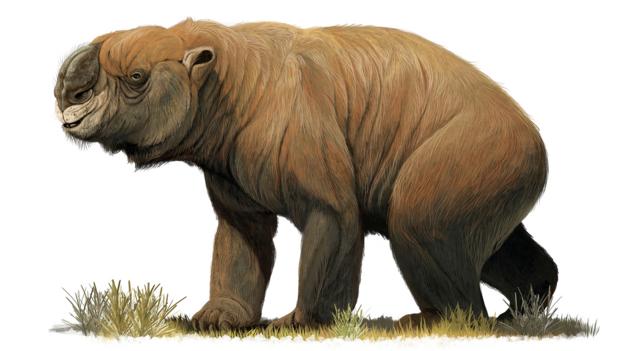
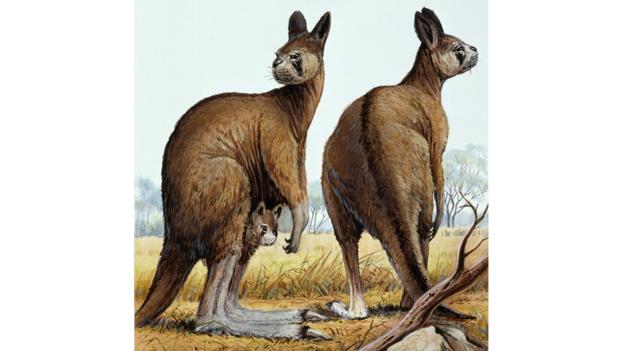
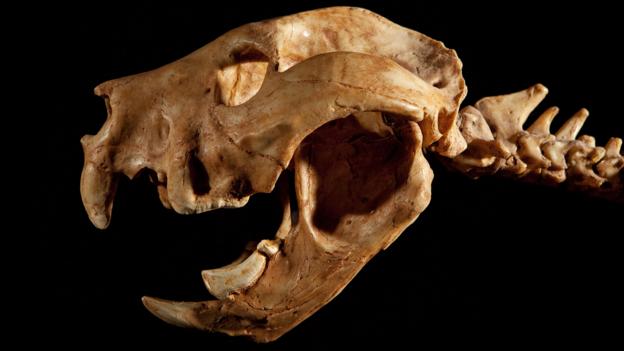
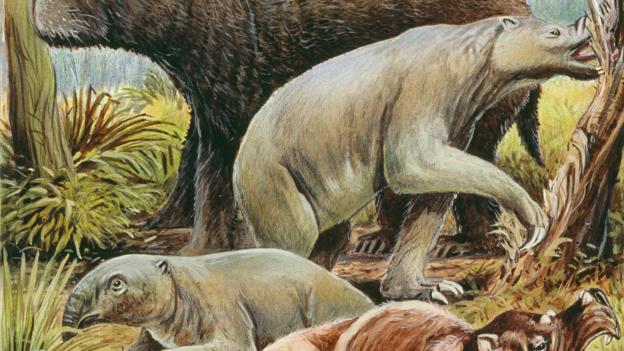
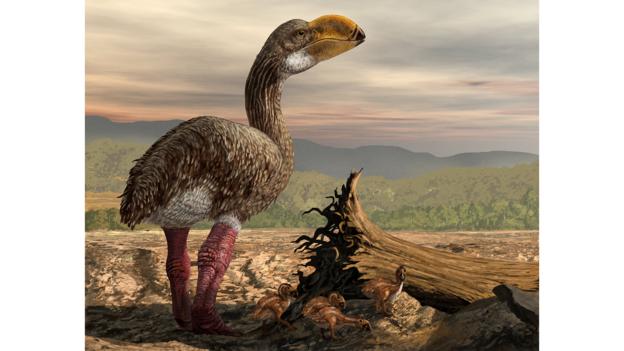
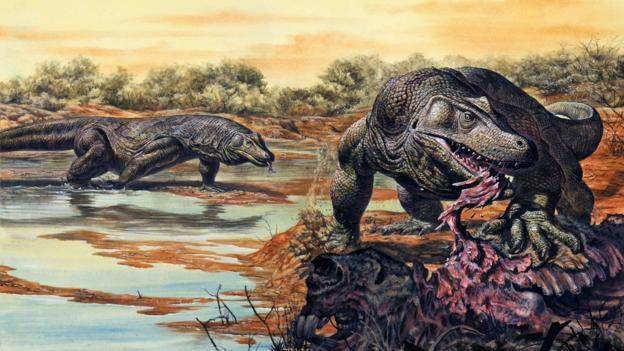
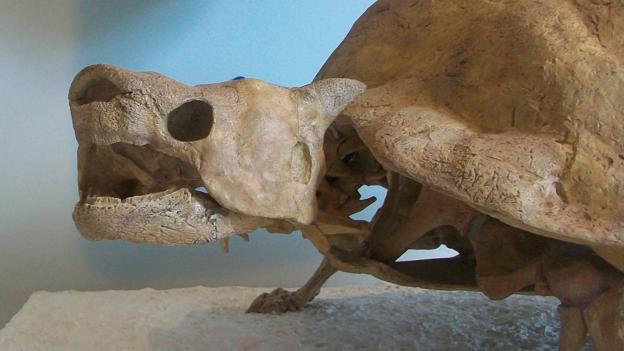

ไม่มีความคิดเห็น:
แสดงความคิดเห็น